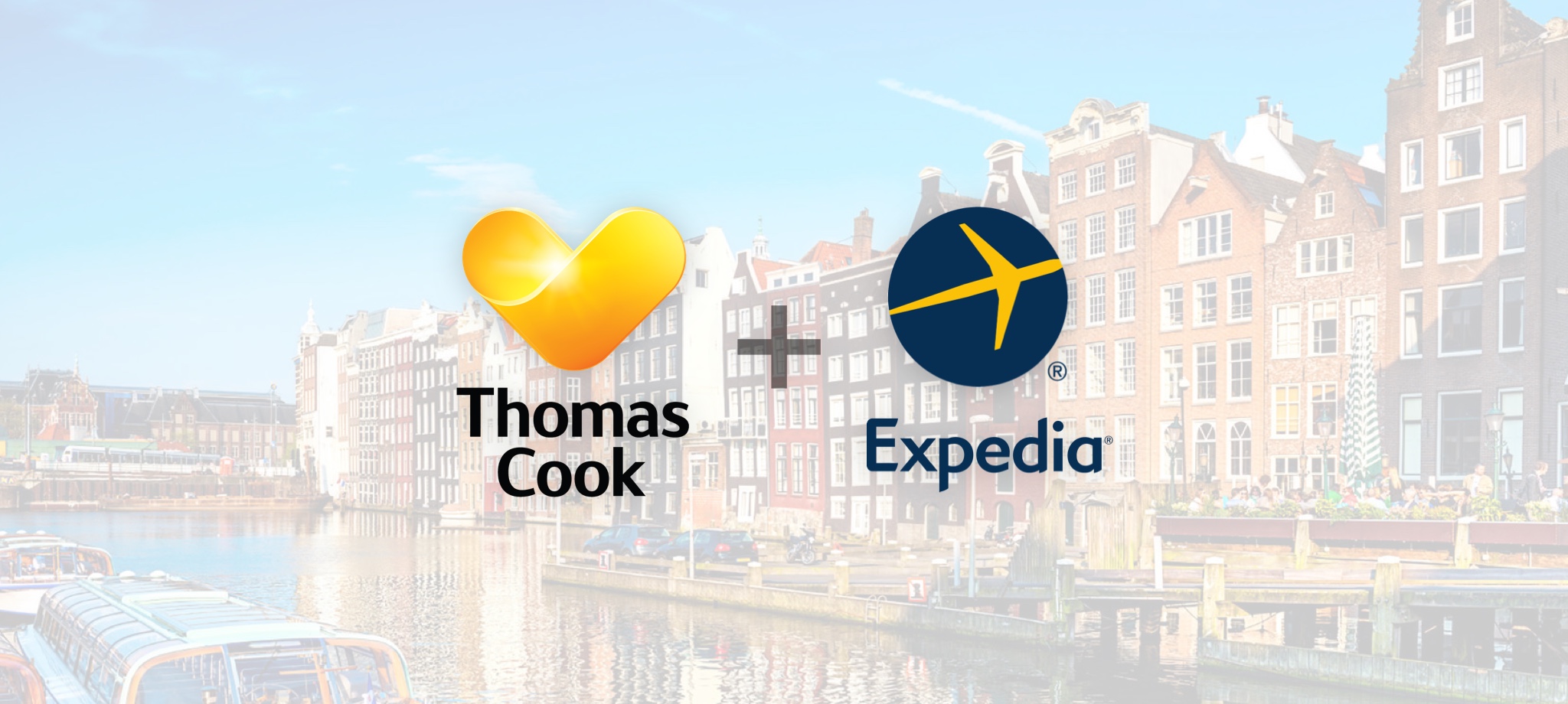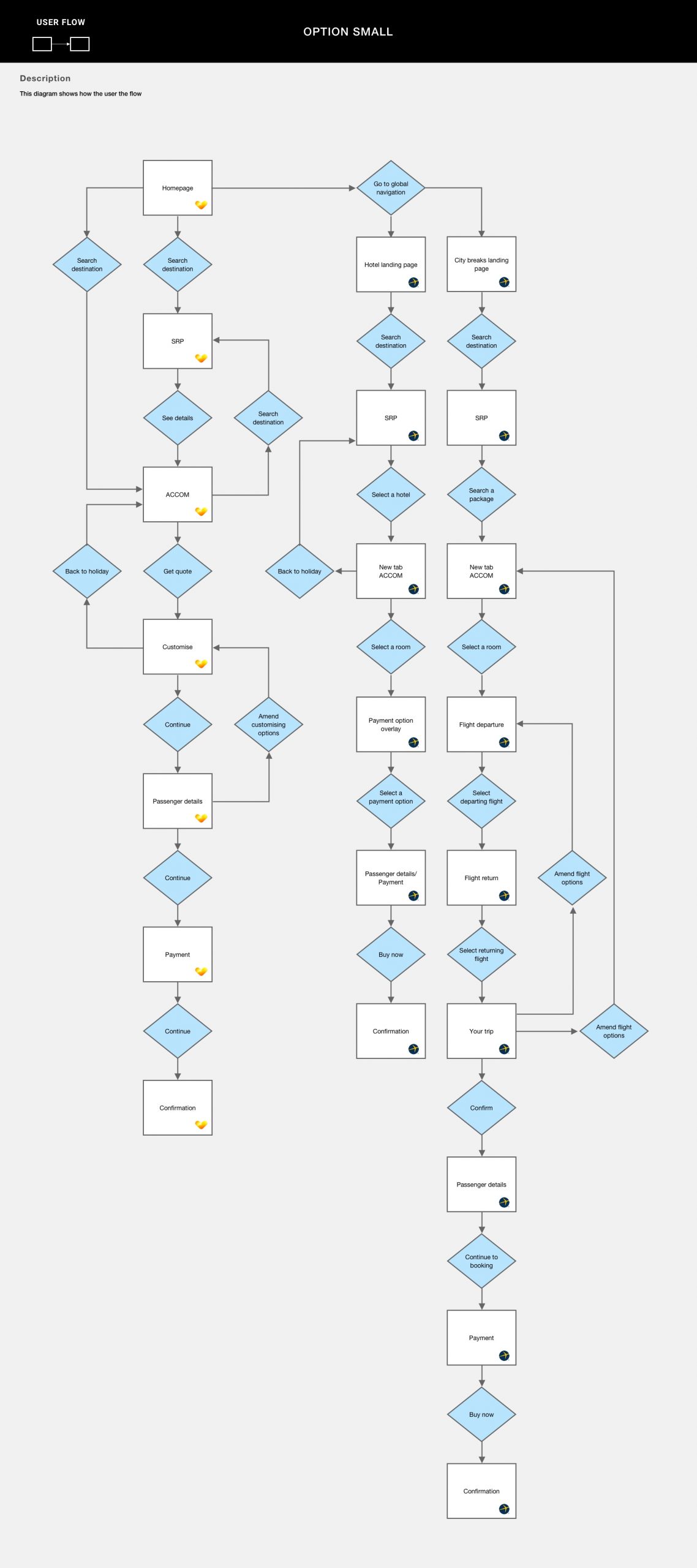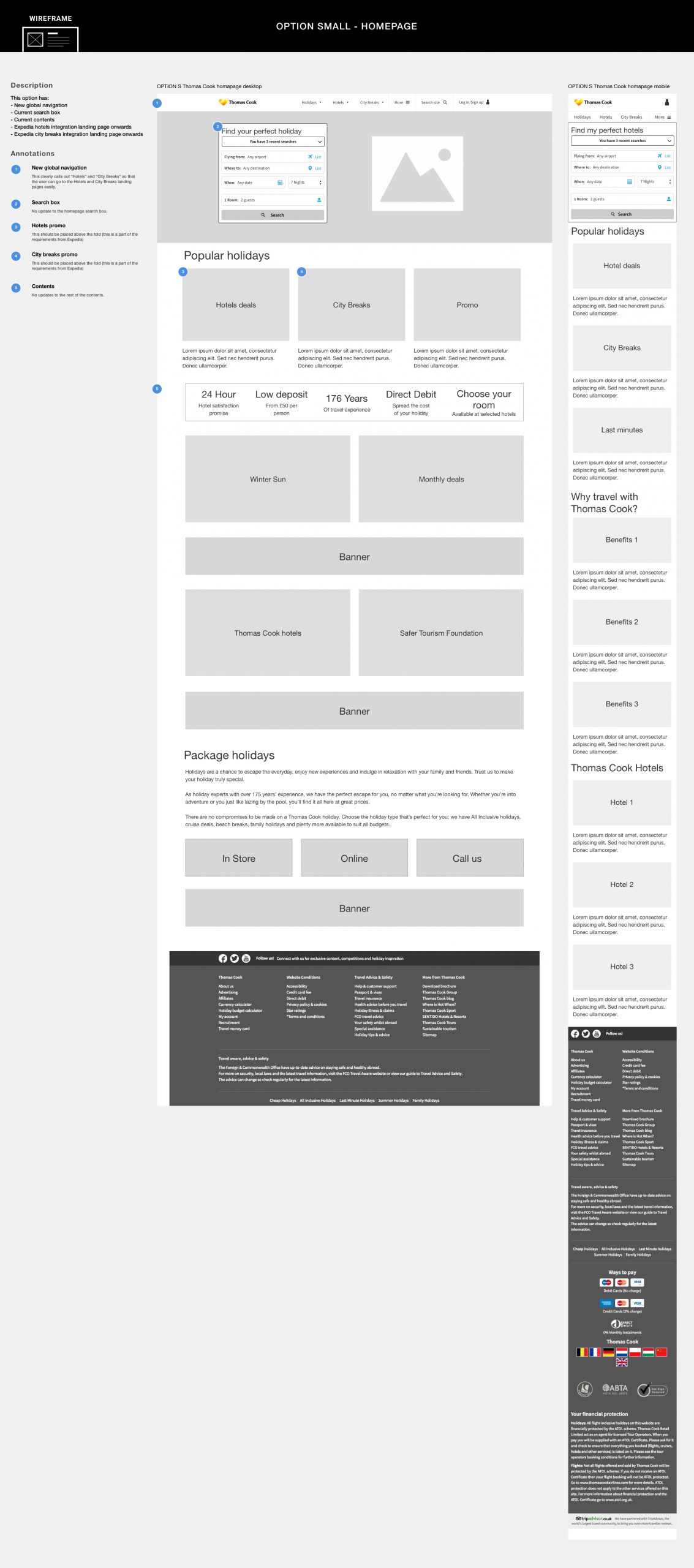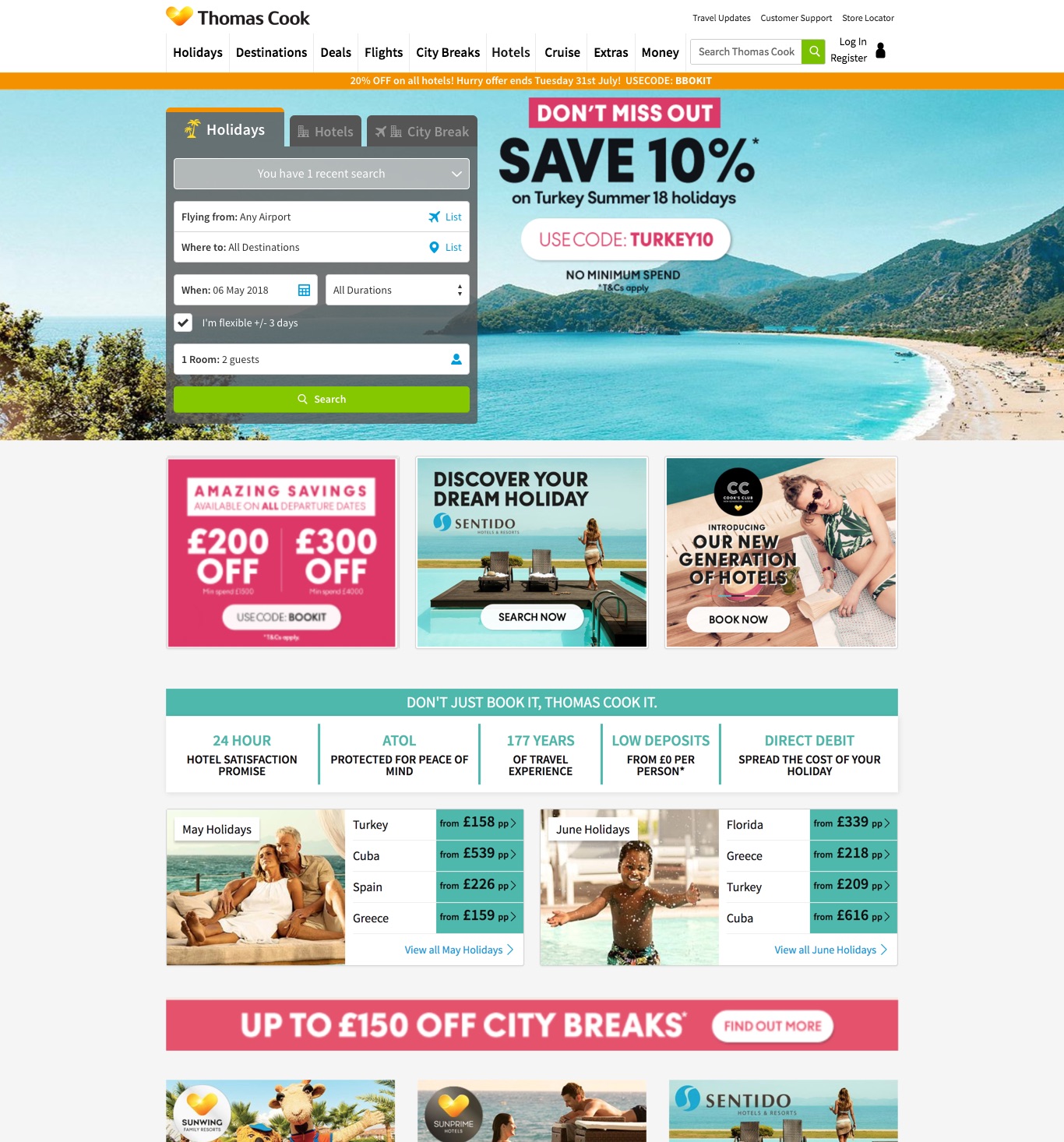
Thomas Cook + Expedia platform integrations
Thomas Cook has revealed a strategic alliance with Expedia in 2017. The deal will see the online travel giant become the preferred provider of hotels for Thomas Cook’s city and domestic holiday business. Expedia will also provide its booking platform to support all city break and hotel-only sales across Thomas Cook distribution channels in Europe.

Joining forces with a company that has the global reach and expertise of Expedia will allow Thomas Cook to further simplify our systems and processes.
- Thomas Cook chief executive Peter Fankhauser

We believe that our coming together will enhance our abilities to help more people to get out and see the world while enhancing each of our competitive positions in the European market.
- Expedia brand president Aman Bhutani
To comply with my non-disclosure agreement, I have omitted and obfuscated confidential information in this case study. All information in this case study is my own and does not necessarily reflect the views of Thomas Cook.
The background
Thomas Cook offers a wide range of products from the all-inclusive holiday packages for adults and family, deals & destinations, luxury, ski to providing extras services such as car hire, travel money and travel insurance.
Expedia will use its technology to deliver bookings for the city and domestic hotels, through Thomas Cook websites, contact centres, stores and distribution to affiliated travel agents.
The platform integrations affected all the B2C and some B2B customer experiences for hotels and hotels+flight bookings across channels (online, call centres and retails stores) and markets (UK, FR, NL, DE, NE).
The challenge
The agreement with Expedia enabled Thomas Cook to attract a new customer segment globally, broadening its distribution reach. However, it also involved many risks and challenges of integrating Thomas Cook platforms across different channels. All the principal stakeholders across the business worked very closely together to assess the impact. We needed to work out new B2C and B2B customer journeys for hotels and hotels+flight and processes in detail.
Some of the challenges we faced as the team were that we didn't have enough information about Expedia's technology and platforms. And the high-level decisions were still being worked out and agreed between both parties.
Below are the actions we took to tackle this challenge:
- Define the deliverables
- Understand technologies and limitations from both parties
- Find the solutions
- Present to the internal stakeholders for approvals
- Implement final products within a short turn around.
My role
I joined Thomas Cook digital team as a hybrid UX designer and researcher in November 2007. Shortly after joining the team, I became a lead designer for the Thomas Cook and Expedia integration project.
I managed and conducted the initial user research to assess any potential problems and impact on our existing user journeys. I facilitate the design reviews in all the critical meetings and workshops with stakeholders (the UK and other markets) and the Expedia's Global Partner solutions team.
The Customer Journey and Service Blueprint
The customers will go through five different stages in their purchase journey:
- Inspiration & plan
- Book
- Before departure
- In destination
- Journey home / beyond
The B2B customers go through a different process compared with B2C. With the introduction of these new products (hotels and hotels+flight) and the platform integration, we needed to understand the cash flow and processes in detail for each stage.

User study
Using usertesting.com, we ran an unmoderated study with 12 participants (6 participants on computers and 6 participants on smartphones). We wanted to find out three things:
- Understand the new target audiences, City Breaks and DIY traveller (Hotels), who will be driven to our site by the Expedia integration
- How we can create more efficient and engaging user experience to maximise the conversions
- Assess any potential impact on our main segment's purchase journeys for all-inclusive packages
We came up with three different user groups:
- Current Thomas Cook customers
- DIY travellers (Hotels)
- City Breaks
We asked their impressions and expectations, any usability issues:
- Homepage and search box
- Hotels landing page
- City Breaks landing page
Feedback
- All users kept mentioning "Inspiration". They wanted to see some crucial contents that can guide them towards the purchasing packages or destinations.
- Very positive responses to mobile experience on the homepage and City Breaks landing page
- Negative feedback on the hotel landing page: All users Hotel landing page both desktop and mobile said the page didn't meet their expectations - the users felt it lacked info and wanted more specific and relevant hotel info
- TC impressions on the homepage: 50/50 split. Some really liked the design and noise on the page, and the others thought it was very cluttered
- TC customer wanted more flexibilities on the search box
- The tabs between TC holidays, hotels only, hotel and flight were expected on the homepage search box, and it was common comments from all users on their impressions
- City breaks user group expressed that time/seasons was important. For example, they wanted to see the top destinations for different seasons or deals specific to the seasons. They liked the price per person by month.
Designing User Journeys
For this integration, we needed to update some of our main components, such as global navigation and search box and redesign our homepage and landing pages. We also needed to visualise the new user journeys addressing the details of all the changes and requirements.
I presented three solutions with a different level of integration:
- Option 1 Small
- Option 2 Medium
- Option 3 Large
Coming up these solution options and visualising user journeys helped our team to move the project forward and make the best decision for the business and users.
User Flow chart

Homepage (wireframe)

Homepage

The Results
After four months of hard work, I delivered the following:
- User study report
- User flow diagrams
- Global navigation
- Search box
- Homepage with merchandising
- City break home template
- SEO destination template
- Expedia search user journeys with Thomas Cook branding
© 2012-2025 Five Pencils Limited. All rights reserved.